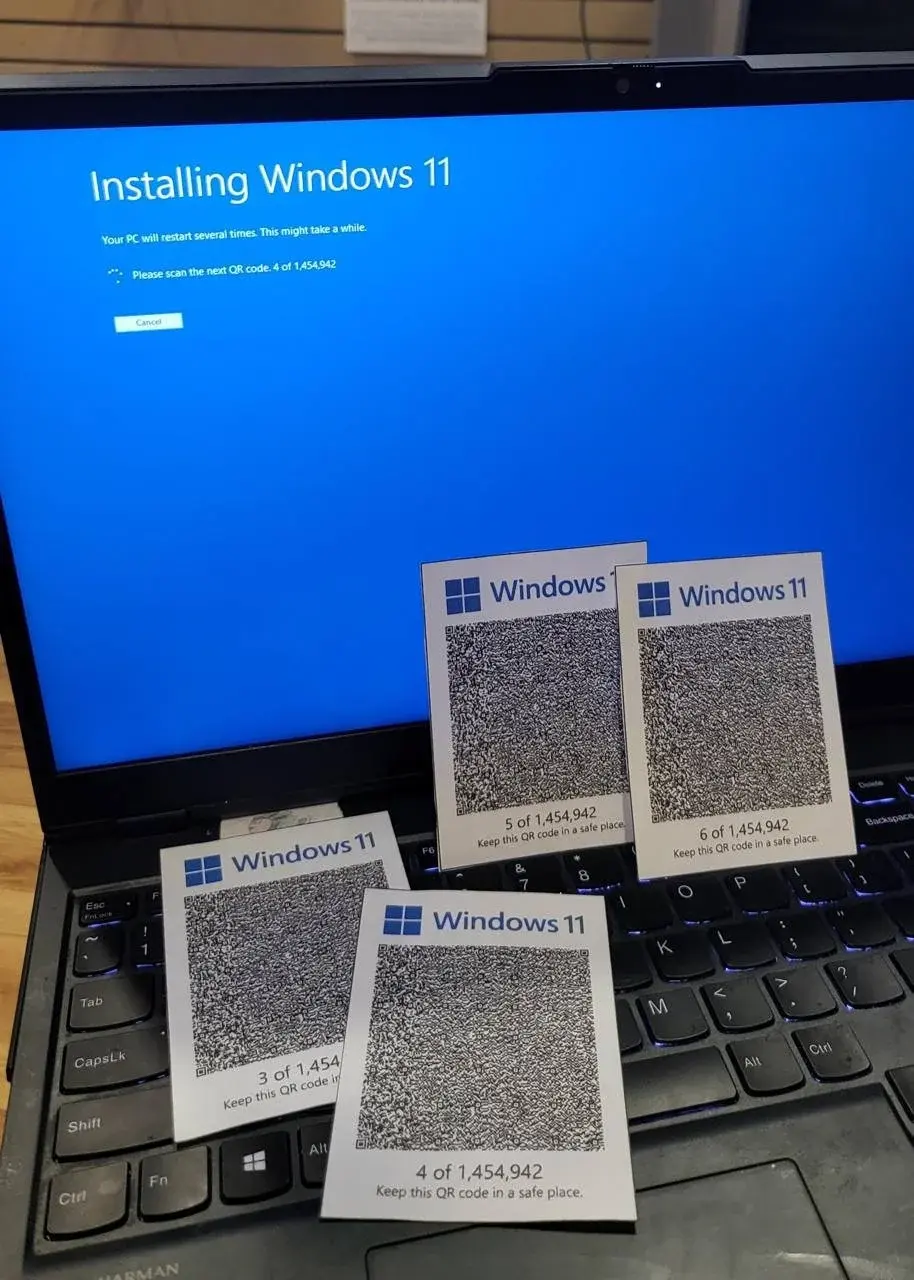this post was submitted on 27 Aug 2024
534 points (99.4% liked)
196
16377 readers
1993 users here now
Be sure to follow the rule before you head out.
Rule: You must post before you leave.
founded 1 year ago
MODERATORS
you are viewing a single comment's thread
view the rest of the comments
view the rest of the comments

Using 1,454,942 maximum size and minimum error correction QR codes in alphanumeric mode (byte mode is a lie) to store Base64-encoded binary data, you get roughly 4,687,823,124 bytes. 4.6 GB. If the cards are two-sided we get 9.2 GB.
Minimum size of Windows 11 installer image seems to be 8 GB, so it checks out!
Why Base64? QR codes can contain pure binary data, no need to use this inefficient, not-error-correcting 6-to-8 encoding.
Oh, I forgot Microsoft does not care jack shit about saving people's computing resources. However, Windows 9x installers on floppies used custom formatting except the first bootable one, allowing them to fit nearly 2 MB of useful data per floppy.
They can contain binary data, but less of it. Not sure of the details, but you get 3k bytes if binary data or 4.2k alphanumeric letters. So no big difference all in all, which is a bit silly.
Also, many QR scanners can't handle binary data and freak out on null values or newlines.
We must consider the practical side of installing Windows 11 from a semitrailer load of cardboard.
The alphanumeric mode does not support lowercase though, it has 5.5 bits/char (pairs of characters are encoded as a base-44 numbers in 11 bits).
Shit!
How do I cancel a print job.
Well, here I go printing 1244 pages of QR codes to store tinycorelinux for the after times.
Better figure out how to code a QR reader in pure machine code as well.
It's cool, you can teach yourself to decode QR by hand
Which is why that optar thing is probably the better option.
How about Optar or PaperBack?
Optar is the first time I've seen someone seriously present their project as compatible (even claiming that is possibly the optimal use case) with IP over avian carriers. Craziness, but well done.
Damn. Now that's some lovely stuff!
Nice!
Though if they were double sided, there is no way we can see all these cards in the same shot. If it starts at odd numbers (i.e. #1), #3 and #4 would share the same card front and back, if it starts even (i.e. a cover graphic and #1 on the same card), #4 and #5 should share the same card front and back.
Card#1, Card#1 back, Card#2, Card#2 back, etc is what you need to get 9GB out of the 1,454,492 card numbers indicated. :)
Right, didn't think of that :)
Can you notch the corner and make a card double the capacity?
What are these two sided QR code cards from the future? Did you ever play Monkey Island without a hard drive in 1989?